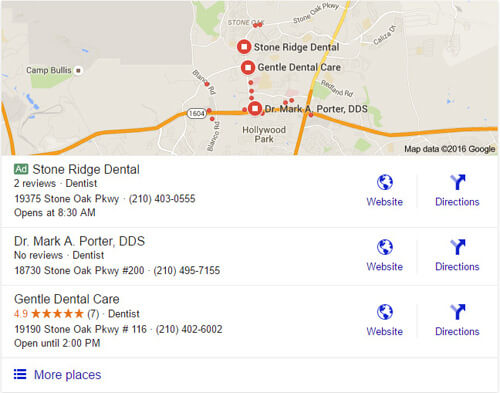
4 Reasons Why Facebook Ads Results Can Look Different For Home Service Businesses
Adding Facebook Ads to your marketing strategy can be a great way to grow your business, increase brand awareness, and engage with potential and existing customers. But one thing that can make business owners uneasy is how different results can be.
One industry — say ecommerce, for example —could see really high conversion rates and easily identify return on ad spend (ROAS), while another industry — say home services — could see lower numbers and have a challenging time figuring out ROAS.
What’s going on here? Do Facebook Ads just not work as well for some industries as they do for others?
If you’re running Facebook Ads for your home services business and you’re wondering why your results always look different from the results you’re hearing about from business owners in other industries, you’re not alone.
Facebook Ads are definitely worth it for home service businesses — but there are four reasons why your Facebook Ads results will always look different from industries like retail and ecommerce…
#1 Selling a Home Service Business Just Takes Longer
Think about it: the sales cycle for a home services business is not the same as the sales cycle for an ecommerce business or a retail shop. You don’t have to have a relationship with a brand to click the “buy now” button for a pair of shoes you’re drooling over. You just have to know how and where to buy.
So think about that in terms of Facebook Ads….a retail or ecommerce store may only have to get an ad in front of a potential customer one time before that potential customer becomes a paying customer. As a result, it can *seem* like Facebook Ads are really cheap for ecommerce and retail businesses.
It’s easy for customers to open up their wallets for low ticket items, but home service businesses are not typically selling low ticket items.You’re not typically selling products that provide immediate gratification or any of the other tangible pleasures that retail provides.
Buyers typically want to know more than just how and where to hire you before they make the jump from potential customer to paying customer. They want to have a relationship with the brand first, because…
#2 Hiring the Wrong Home Service Business Carries More Risk
It doesn’t take much convincing to get a potential customer to click the “buy now” button for a pair of shoes they can’t wait to slip their feet into — especially when there are things in place to reduce risk, like fast shipping and easy returns. Even if they haven’t purchased from the brand before, risk is minimal. They can always get their money back and life will be no worse than it was before they bought the shoes.
But as a home services business, you’re selling something less tactile and far riskier — a service.
When you hire a plumber you’ve never worked with before to come into your home and install a costly new tankless water heater, there’s a lot that could go wrong if you hire the wrong company.
The plumber could show up late, or not at all. They could damage the water heater or install it wrong. They could leave you with a massive bill that far exceeds the number you were quoted at the start. They could stop in the middle of the job and leave your home a total mess.
In other words, there are a lot of what ifs that you have to contend with when you hire someone to perform a service, that you don’t have with the shoe purchase. And that’s true for your customers, too.
They’re what if-ing their little hearts out, and they want to minimize risk as much as possible.
They want to know they’re going to be charged a fair price, that the work will be done right, and that their property will be taken care of. They want to know that the contractor will be clean, professional, and trustworthy. After all, they’re going to be in their home around their pets and kids.
And here’s another reason hiring the wrong home services company feels riskier than making an ecommerce purchase: Chances are, the work being done is out of the homeowner’s area of expertise.
They can look at a pair of shoes and judge their quality, but they wonder: Will I able to tell if a plumber does the job wrong, cuts corners, or tells me I need something I don’t?
This increased risk and lack of confidence is exactly why people will ask their friends and family for contractor referrals, but aren’t likely to ask where their friends or family buy their shoes. It’s why people check reviews before they pick up the phone.
The truth is: when we make a purchase — especially a high ticket purchase — we all want to know we’re making the right choice and that it’s going to be okay. And when it comes to a purchase that could affect the value, comfort, and integrity of our homes, we want to be extra sure.
For that reason, more ads are typically needed for a home services business to see a conversion on Facebook.
You have to get your name and business out in front of a potential customer multiple times to build trust and authority with your audience. They have to become familiar with your brand — because familiarity minimizes risk and increases confidence.
So, it’s not that you’re paying more for Facebook Ads as a home service business — it’s that you will likely need to run more ads over more time to turn a prospect into a paying customer.
#3 Home Services Are Not an Impulse Buy
One of my closets is filled with shoes, bags, and jewelry. That’s it. Do I really need another pair of black boots or another bag? Absolutely not. But will I justify spending money on both if I see an ad that catches my eye? Of course.
I don’t care who you are, getting new things that you absolutely love feels good. Spending thousands of dollars on a new plumbing fixture install for your home does not.
It doesn’t mean we don’t enjoy the benefits of the plumbing fixture — it just means the urgency, cost, and benefits are perceived differently than they are with an ecommerce product.
The service you provide is not something your customers expect to squeal with delight over. And it’s definitely not an impulse buy. So ad conversion requires more context and more frequency.
Let me explain…
If I see a new bag I love on sale for under $100, I’ll start doing the math. I’ll think, Well, I recently stopped drinking, so I’m saving X amount of money on wine each week, which adds up to $100 in X amount of time.
What’s that mental calculation come out to? I deserve that new bag and I should get it.
All the ecommerce company has to do is show me an ad once, maybe twice — then they’re done selling. I do the rest of the selling in my head.
As a home service business, you’ve got to work a lot harder and so do your ads. You have to convince them that they need your services as urgently as they need that thing they really, really want — the thing saved in their Amazon wish list.
You’ve got to convince them that you’re the right company for the job, and that risk is so low and the experience so stress-free that they have no reason to defer the decision to a later time.
You’ve got to convince them that the gain is greater than the loss — that they’ll be glad they called. And it’s not going to take one ad — it’s typically going to take many.
#4 ROAS Isn’t as Straightforward for Home Services Businesses
For an ecommerce business, ROAS can be easily calculated if the Facebook pixel is set up properly, because the pixel will trace the user’s ad view or click through to the point of purchase. When your sale happens on the website and you have a purchase event that is triggered, tracking is super simple.
But for service businesses, the return is a little harder to see — not because you’re not seeing a return, but because the end goal (a purchase) doesn’t typically happen on your website.
You’re asking the person who sees your ad to take the next step in the sales process, which is typically to visit your website or give you a call. But there’s no product to buy online, no purchase event to trigger, so that’s the end of easy ROAS tracking.
To figure out the ROAS of your Facebook Ads, you’ll have to:
- Look at attribution — If your customers have Facebook IDs and your Facebook pixel is set up properly, you should be able to tell if a customer saw one of your ads at any point in the customer journey. Attribution reveals what online and offline actions can be attributed to your ads, so you know if your ads are effectively getting people to take specific actions and become paying customers.
- Look at your call tracking — While call tracking won’t give you a complete or 100% accurate picture, it’s a key tool for evaluating the effectiveness of Google Ads and Facebook Ads. Just remember, you probably won’t see the same high numbers with Facebook that you might see with Google, because Facebook Ads are more focused on nurturing and getting customers earlier in the buying stage — not on those hot leads who need your services ASAP. But you should see calls coming from your Facebook Ads! Also, keep in mind that someone may have seen your ad on Facebook, but ended up researching and clicking to call on Google. It may look like the lead came from Google, when in reality, the ad played a pivotal role in getting the call.
- Look at this year vs. last year — Another great way to tell if your Facebook Ads are working is to compare the number of calls and booked jobs you’re getting this year vs. last year (assuming you weren’t running Facebook Ads last year). You should see an increase in calls and booked jobs if you’re using Facebook Ads, so if you don’t, there’s a problem. But when considering the numbers, take into account any and all marketing changes that you made in that time frame.
- Ask your customers —It also never hurts to ask your customers what made them call you. Ask if they remember seeing any ads on Facebook. It’s simple, but it can help you track ROAS!
Hopefully this blog post has been informative and cleared up some of the confusion you may have had around Facebook and ROAS for service businesses.

